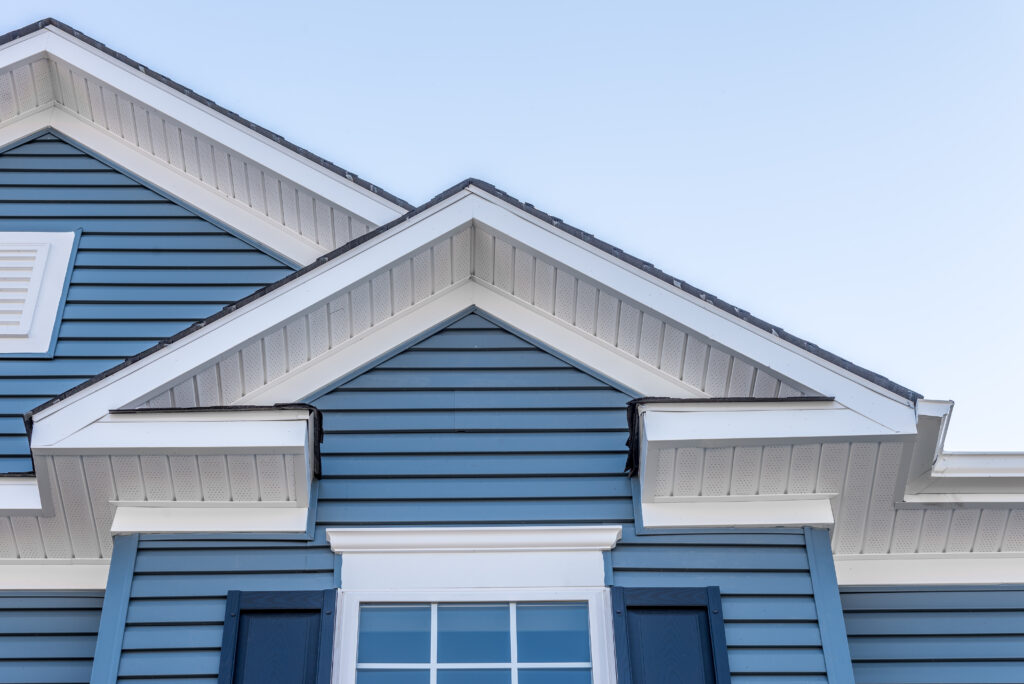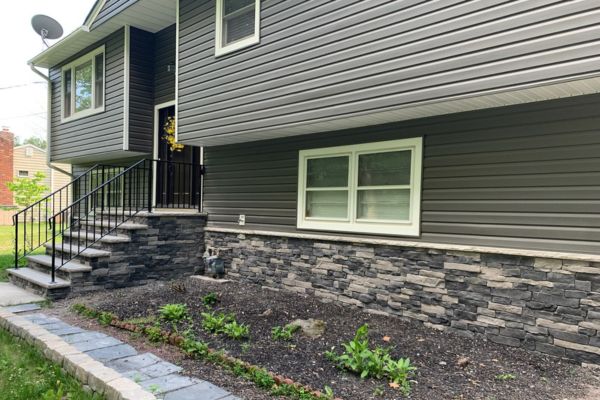The Vital Guide to the Different Types of Home Siding and Their Unique Benefits
In the realm of home renovation, selecting the best exterior siding is a vital choice that influences both aesthetic charm and functional performance. With so several alternatives to take into consideration, which house siding product really stands out for your particular project?
Timber House Siding
Timber exterior siding, a popular selection for household outsides, provides a timeless visual that incorporates all-natural charm with architectural honesty. This exterior siding material is readily available in different styles, consisting of clapboard, roof shingles, and board-and-batten, allowing home owners to customize their appearance to match their style preferences. Timber exterior siding is typically crafted from sturdy types such as cedar, redwood, or pine, which are understood for their resilience and capacity to endure ecological stressors.
Among the main advantages of wood house siding is its exceptional insulation buildings, which can add to power efficiency and reduced heating expenses. Additionally, wood house siding is naturally degradable, making it an eco-friendly alternative when sourced sustainably. Regular maintenance, consisting of painting or discoloration, can prolong its life-span and enhance its look, allowing house owners to maintain the natural beauty of the timber.
Nevertheless, possible disadvantages consist of susceptibility to bugs, rot, and weather damages, demanding sufficient therapy and upkeep - morris siding contractor. Despite these problems, when properly taken care of, timber exterior siding can give a gorgeous and sturdy remedy that boosts the character of a home while using a warm, inviting environment

Plastic Home Siding
Vinyl house siding has arised as a leading option for homeowners looking for a low-maintenance exterior alternative that combines resilience and price. This versatile product is crafted from polyvinyl chloride (PVC), making it resistant to numerous weather, including wetness and UV rays. Because of this, vinyl house siding does not warp, rot, or fade, making certain resilient visual appeal.
Among the primary benefits of vinyl exterior siding is its considerable series of styles and colors, permitting homeowners to accomplish the wanted look for their building without the need for regular repainting. In addition, vinyl exterior siding is very easy to mount, which can considerably minimize labor prices during construction or restoration tasks.
Plastic siding likewise adds to power performance. Many options function insulation backing, which improves thermal efficiency, aiding to maintain comfortable indoor temperatures and possibly lowering energy expenses. Its smooth surface area promotes very easy cleansing, calling for just routine cleaning with a yard pipe to get rid of dust and particles.
Fiber Concrete Home Siding
Fiber concrete exterior siding has acquired traction among home builders and home owners alike due to its amazing combination of durability and visual convenience. Made up of a mix of concrete, cellulose, and sand fibers, this exterior siding option is crafted to stand up to extreme weather, including high winds, hefty rain, and temperature variations, making it a lasting choice for household exteriors.

Among the primary advantages of fiber cement house siding is its resistance to insects, such as termites, and its non-combustible nature, offering boosted fire safety. morris siding contractor. In addition, it is available in a large array of designs, textures, and colors, permitting homeowners to accomplish their wanted aesthetic without compromising efficiency
An additional advantage is its low upkeep needs; fiber concrete exterior siding normally calls for painting or staining every 5-10 years, which is less regular than various other products. Furthermore, its longevity adds to a lower general price of possession, as it reduces the requirement for regular fixings or substitutes.
Inevitably, fiber concrete house siding stands for an outstanding investment for those seeking a resilient, appealing, and flexible exterior choice, integrating both type and function to improve the home's visual charm.
Metal Exterior Siding
The allure of metal exterior siding hinges on its robust sturdiness and contemporary visual charm, making it a preferred selection check these guys out for contemporary architecture. Available in products such as light weight aluminum and steel, steel home siding uses a series of finishes and shades, allowing homeowners to attain a tailored appearance that matches their design vision.
Power effectiveness is an additional substantial benefit, as lots of steel house siding items are made with insulation alternatives that aid manage interior temperature levels. This can bring about lowered power expenses gradually. Furthermore, metal exterior siding is typically recyclable, making it an ecologically friendly option for sustainability-minded property owners.
The installation process for metal siding can be relatively straightforward, resulting in a quicker turn-around time for building and construction jobs. Generally, metal home siding integrates performance and style, making it a useful choice for those seeking a enduring and visually appealing exterior coating.
Brick and Stone Siding
Block and rock exterior siding stands out as a classic option that enhances the visual appeal of any home. Recognized for their longevity and reduced maintenance, these products offer an outstanding roi while elevating the home's curb allure. Available in numerous shades, textures, and patterns, brick and rock can be tailored to fit varied architectural designs, from standard to modern-day.
One of the primary advantages of block and rock exterior siding is their power performance. Both materials possess all-natural shielding buildings that help control indoor temperature levels, possibly reducing cooling and heating prices. In addition, they offer exceptional fire resistance contrasted to various other house siding options, contributing to enhanced security.
One more advantage is their long life. Block and rock can last for years, frequently needing very little upkeep beyond occasional cleaning. Unlike wood exterior siding, they are unsusceptible bugs and rot, making certain a long-lasting exterior that withstands the elements.
Conclusion
In summary, the option of exterior siding significantly influences a home's aesthetic allure, energy efficiency, and upkeep requirements. Each great site kind of home siding-- whether wood, vinyl, fiber steel, brick, or concrete and stone-- supplies distinct benefits customized to different property owner choices and environmental problems.
One of the main advantages of timber house siding is its superb insulation buildings, which can contribute to power efficiency and lower home heating costs. Furthermore, timber siding is naturally degradable, making it an eco friendly choice when sourced sustainably.One of the key benefits of metal home siding is its resistance to numerous environmental elements.Power performance is another considerable benefit, as many metal home siding items are designed with insulation choices that assist manage interior temperatures. Each type of exterior siding-- whether timber, plastic, fiber steel, block, or concrete and stone-- provides special advantages customized to numerous home owner choices and ecological problems.